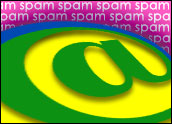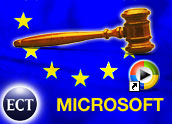
Aiming to polish the profile of its Web mail product while also bidding to be a standard-bearer in the security space, Microsoft released a service aimed at helping consumers and Internet service providers (ISPs) alike filter out more spam e-mail.
Microsoft established the MSN Postmaster Web site to act as a clearinghouse for e-mail information. ISPs and bulk mailers can visit the site to learn how many of their messages are being sent to Hotmail users and whether they are being let through spam filters. The site will be a central spot for new software updates as well as information on spam-fighting techniques.
The push also includes the launch of what Microsoft is calling Smart Network Data Services, which uses Microsoft’s Sender ID Framework, which it is pushing as a spam-blocking standard. The services are being billed as a way for ISPs to cut spam and phishing attacks for all e-mail users.
More Information-Sharing
MSN Product Unit Manager Kevin Doerr said the moves represent the arrival of “broader, more-comprehensive and transparent information-sharing with ISPs and e-mail senders to help protect e-mail and ensure that it continues to be an essential and valuable communications tool.”
“With over 200 million active e-mail accounts worldwide, MSN Hotmail is in a unique position to collect and analyze e-mail activity data,” he added.
Among Web mail users, the ability to sift out spam will likely be awinning strategy, though consumers are likely to take a fairly skepticalapproach. After all, Microsoft and others that offer Web mail services have been at the forefront of a massive campaign to curtail spam and phishing attacks, working with law enforcement to identify spam rings and even filing civil lawsuits in some instances, with little impact on the overallflood of spam.
Sifting Shifting Sands
Spam-cluttered mailboxes were once a widespread complaint among Web mail users. While such accounts still attract their share of unwanted commercial messages, improved spam filters have helped. In addition, the rapidly growing size of Web mail inboxes, with 2 GB storage capacities now common among the major providers, have made the problem of spam less urgent for many users, since they no longer have to worry about spam crowding out legitimate messages.
Still, enticed by Google’s Gmail and other innovations, more users are establishing Web mail accounts, primarily because they enable users to access their messages from anywhere but also because such accounts can be integrated into portal home pages where inboxes can be viewed alongside news feeds and other content, Forrester Research analyst Charlene Li said.
Use of Web mail will also be spurred on by new features, such as tighter integration of e-mail and instant messaging platforms, Li told the E-Commerce Times. “Those accounts become much less desirable if they are clogged with spam that has to be sifted through in order to find the real messages,” she said. “Any portal that can show a distinct improvement on that problem will gain something of an advantage.”
Strange Bedfellows?
Microsoft began using Sender ID in January as a way of authenticating the true source of e-mails, since many spam and phishing messages bear false or misleading “from” lines.” Sender ID has been put in place alongside existing spam filters, Microsoft said, and can now direct messages that appear “phishy” to a user’s Junk mailbox.
MSN will also make “warning alert” notifications available to Hotmail users who tell them when messages whose origins cannot be confirmed by Sender ID arrive.
Sender ID has gotten something of a cold shoulder from the security industry, with open-source groups pushing for a different standard and online services that had begun to test it, including AOL, saying they would back alternatives instead.
Given that, it’s not clear how eager ISPs will be to embrace the latest MSN innovations, but the timing might be right.
Earlier this week, the Federal Trade Commission (FTC) asked ISPs to better monitor their networks for “zombies,” or computers that are tricked into sending out large amounts of spam without their owners knowing it. Many analysts say that could be a preview of more stringent requirements from the FTC if the Internet industry cannot effectively contain spam and phishing.
The MSN service could help ISPs identify surges in e-mail traffic to Hotmail addresses, though most providers already closely monitor their users bases. Many, in fact, have pre-set e-mail limits on accounts that trigger flags when large numbers of messages are sent in a short period of time.












































Social Media
See all Social Media